Gannet Colony at St. Mary’s
We were nearing the end our our time in Newfoundland and our last major birding destination was Cape St. Mary’s Ecological Reserve. According to its website, ” During the breeding season, it is home to 30,000 Northern Gannet, 20,000 Black-legged Kittiwake, 20,000 Common Murre, and 2,000 Thick-billed Murre.” We arrived on a beautiful day about 4:30 in the afternoon and looked out from the visitor center to this stunning view of the cape and could see thousands of white Northern Gannet on the rocks and flying out over the ocean.
As we walked along the nearly mile-long path toward the heart of the colony we got better views of the birds nesting there.
This next shot shows the density of the Gannets on their nests atop the rocks.
The nesting material did not grow on the bluffs but was air-mailed in from seaweed beds in the ocean.
Here are a couple of young Gannets on the nest being doted on by one of their parents.
Adjacent to the bluff we were standing on there was a steep and narrow canyon. I noticed that some of the Gannets liked to fly into the canyon, make a u-turn at the end, and then head back toward where the canyon met the sea. I had a good look down at them flying so I had to try some BIF Shots. I love the colors on the backgrounds of each of these shots!
We also saw Common Murre, Razorbill, and Black-legged Kittewake (a type of gull), but my favorite chick was Karen!
If you enjoy seeing beautiful pictures of birds from around the world and reading about them Click Here to sign up for our mailing list. Members can post their own GreatBirdPics and learn more about bird photography techniques.
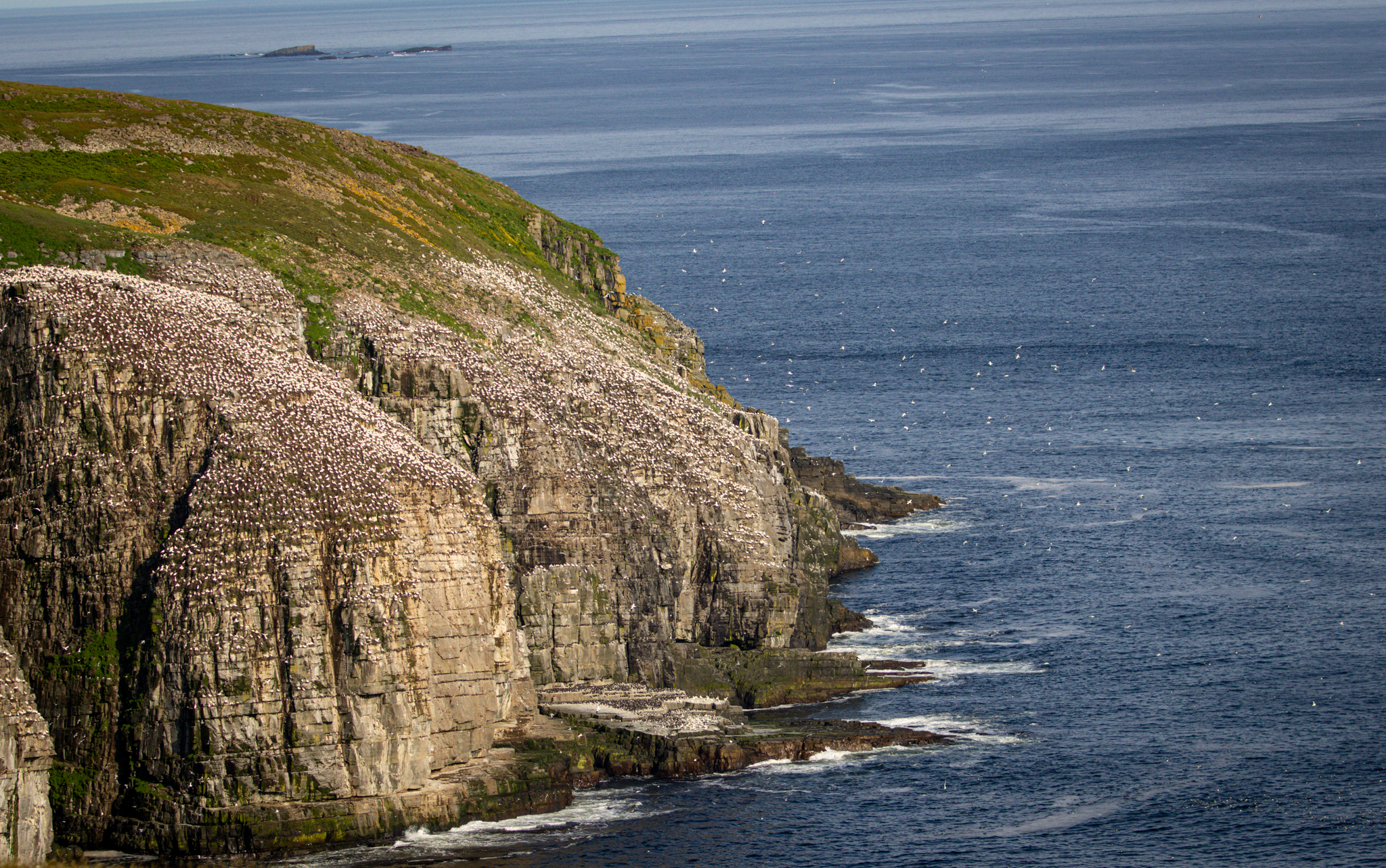
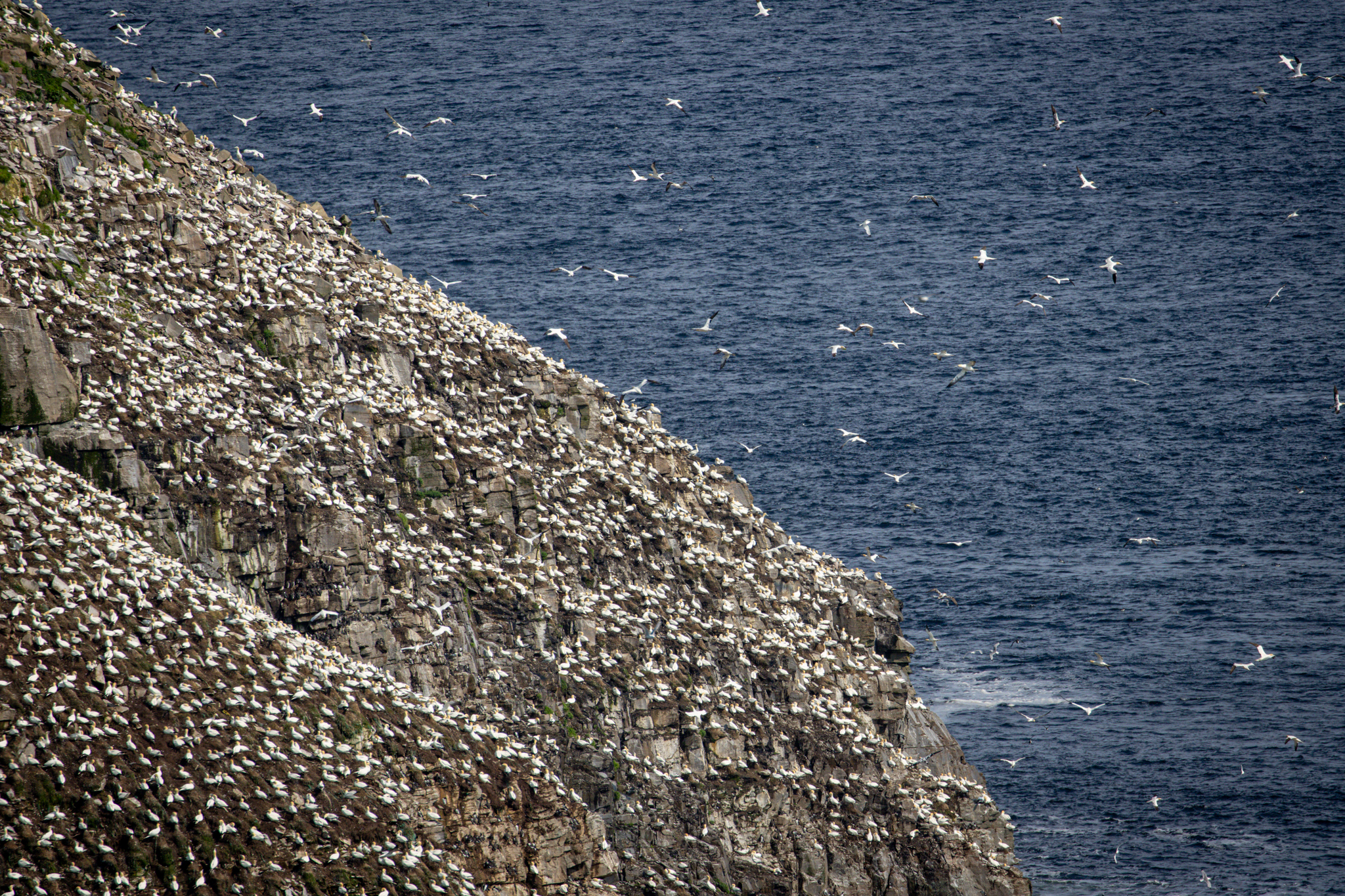
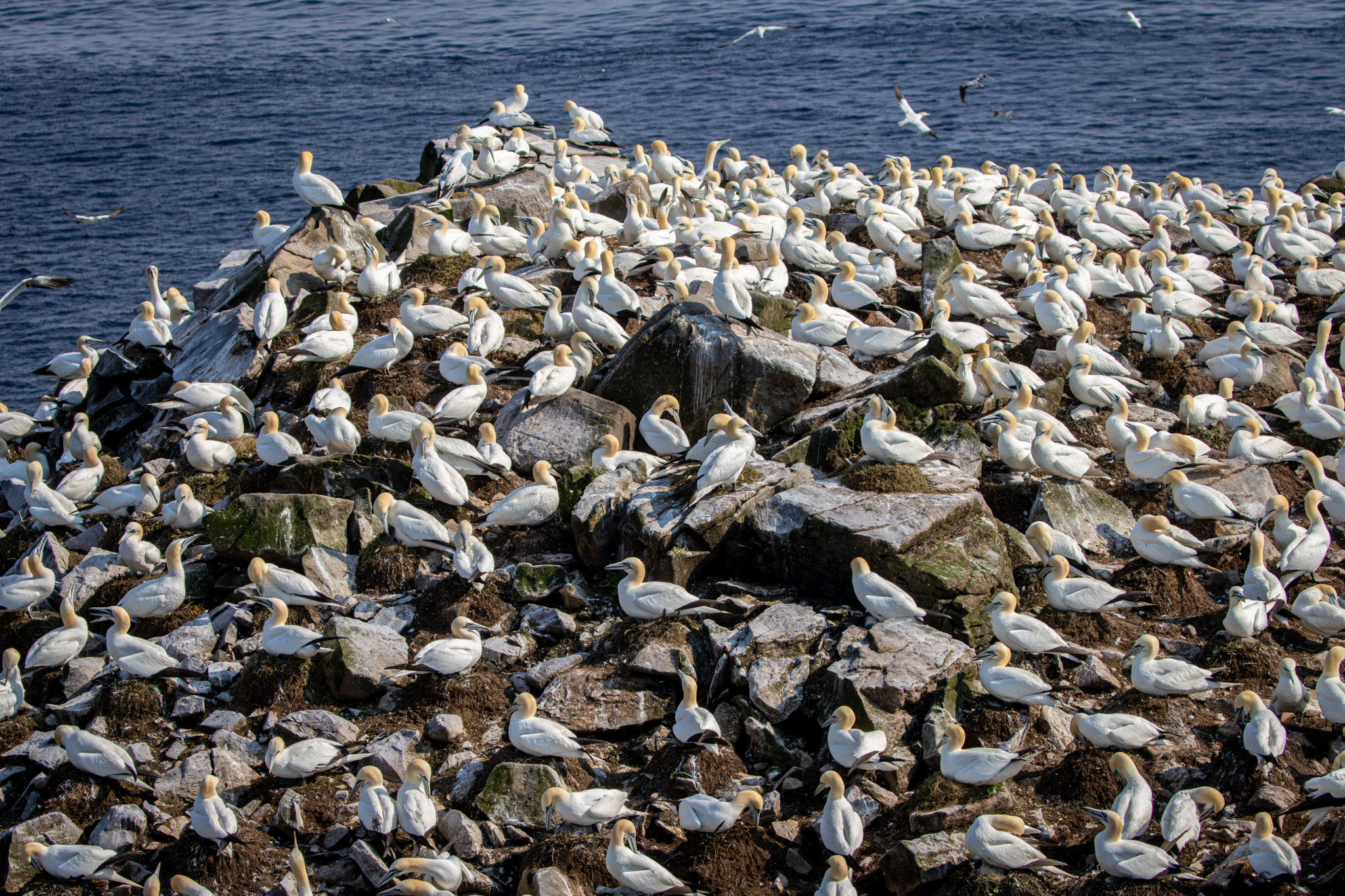
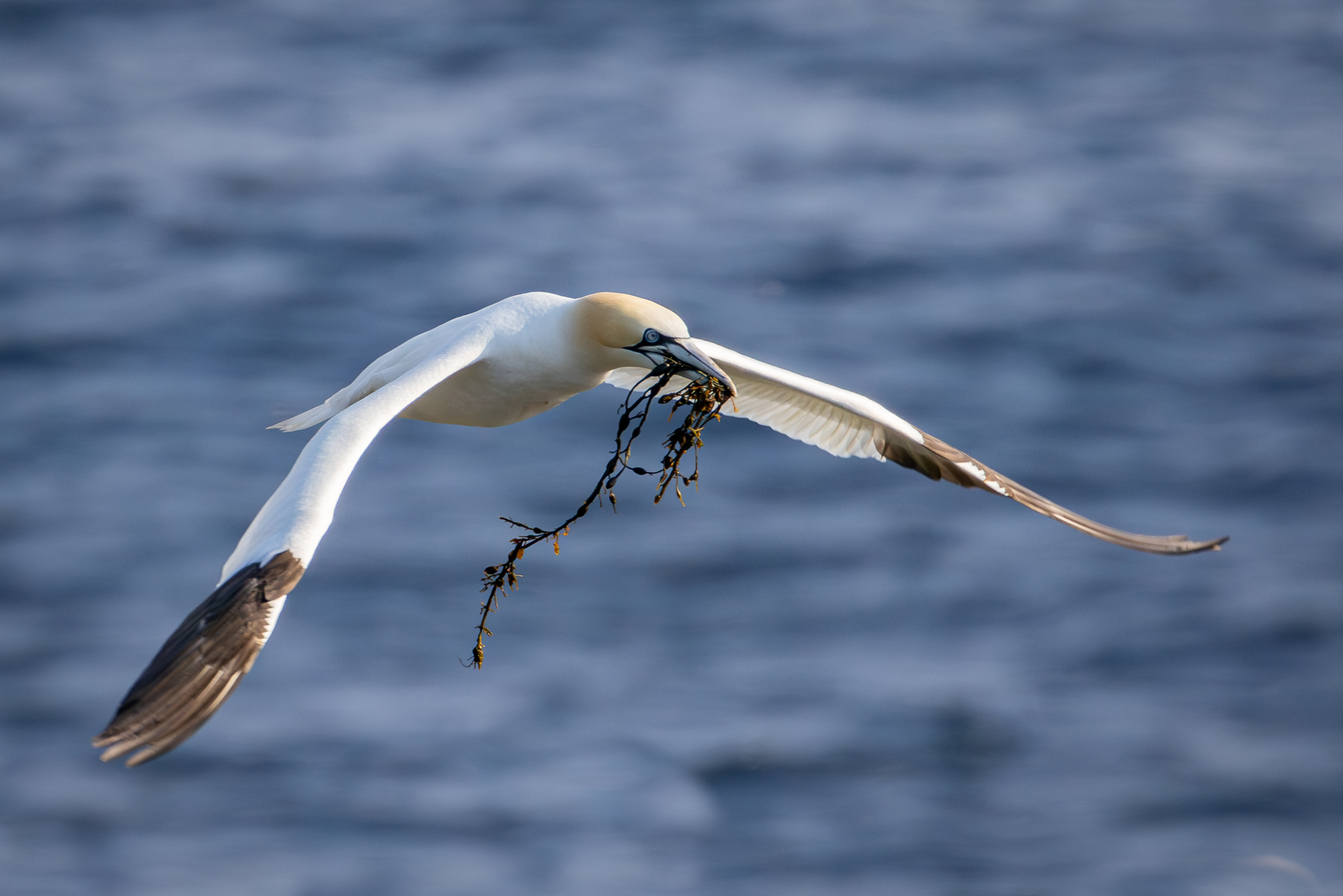
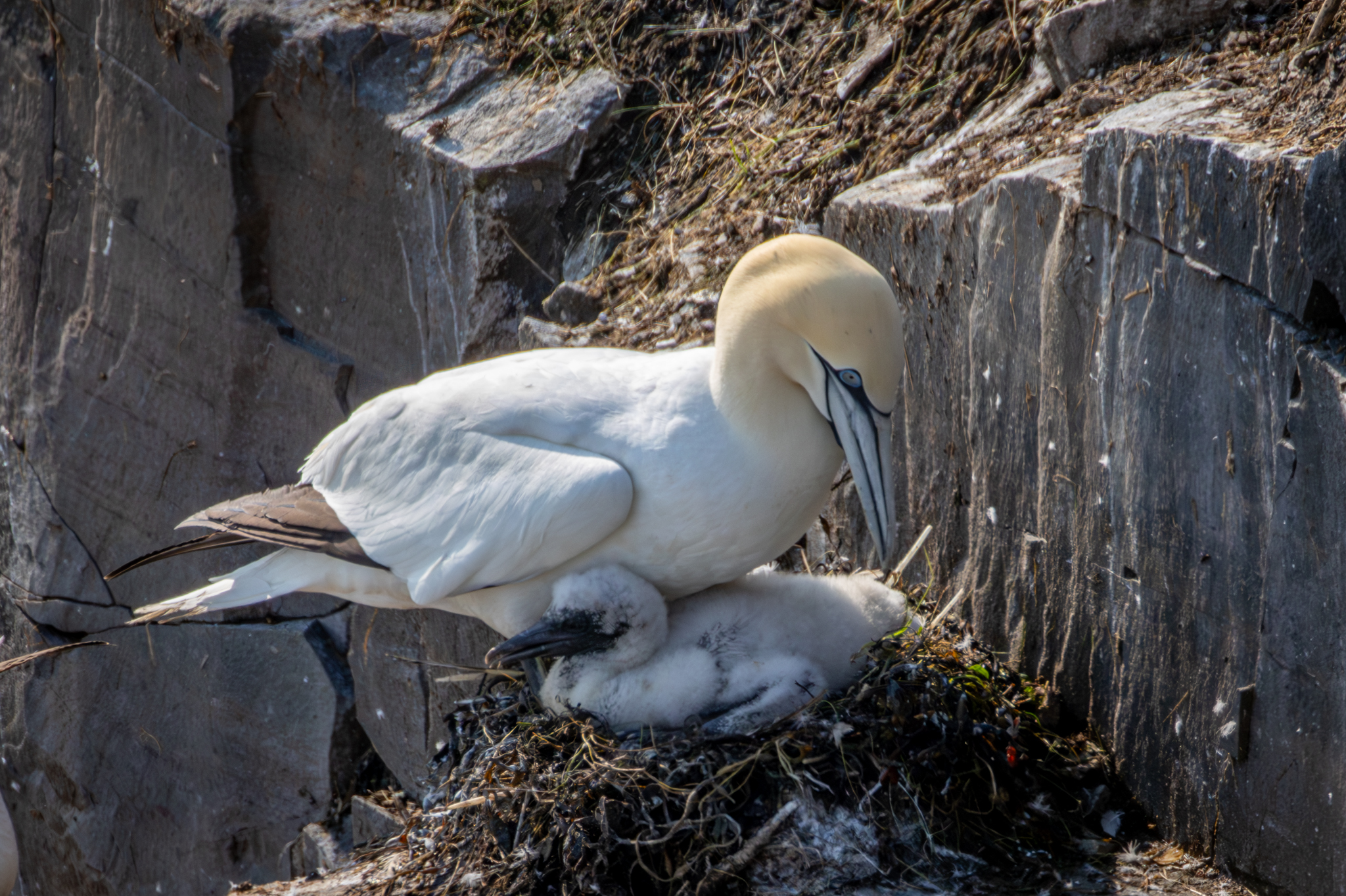
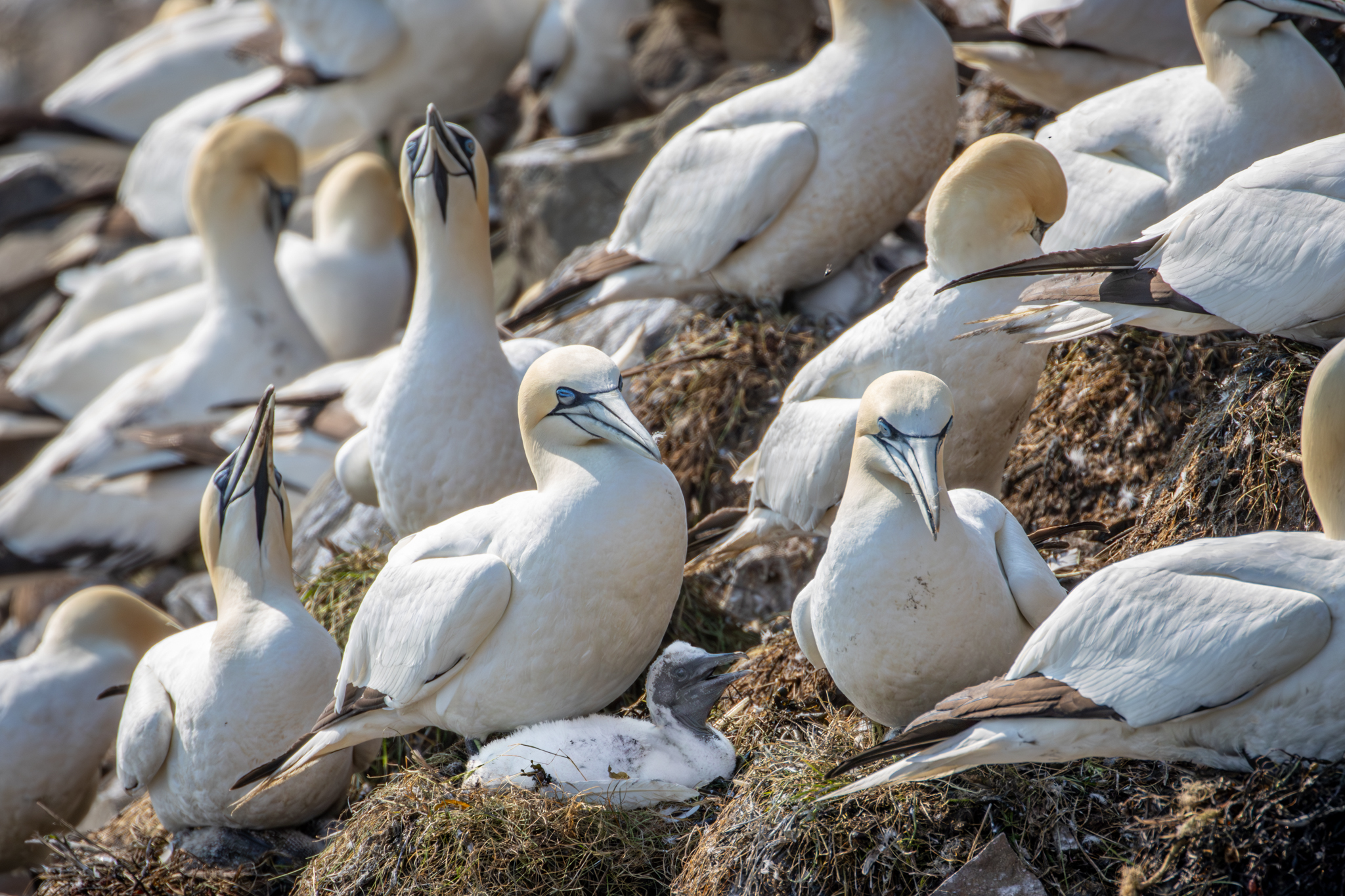
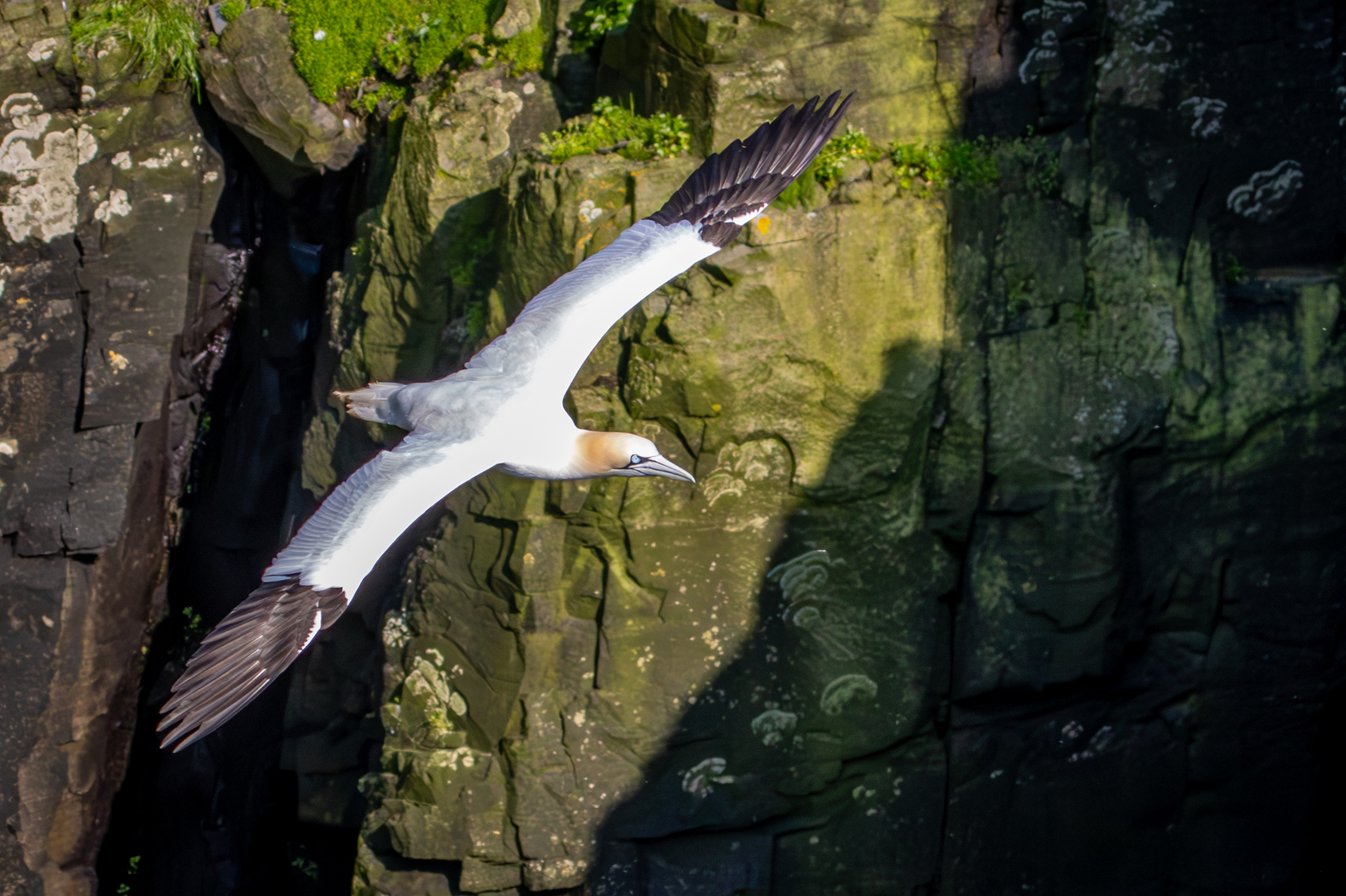
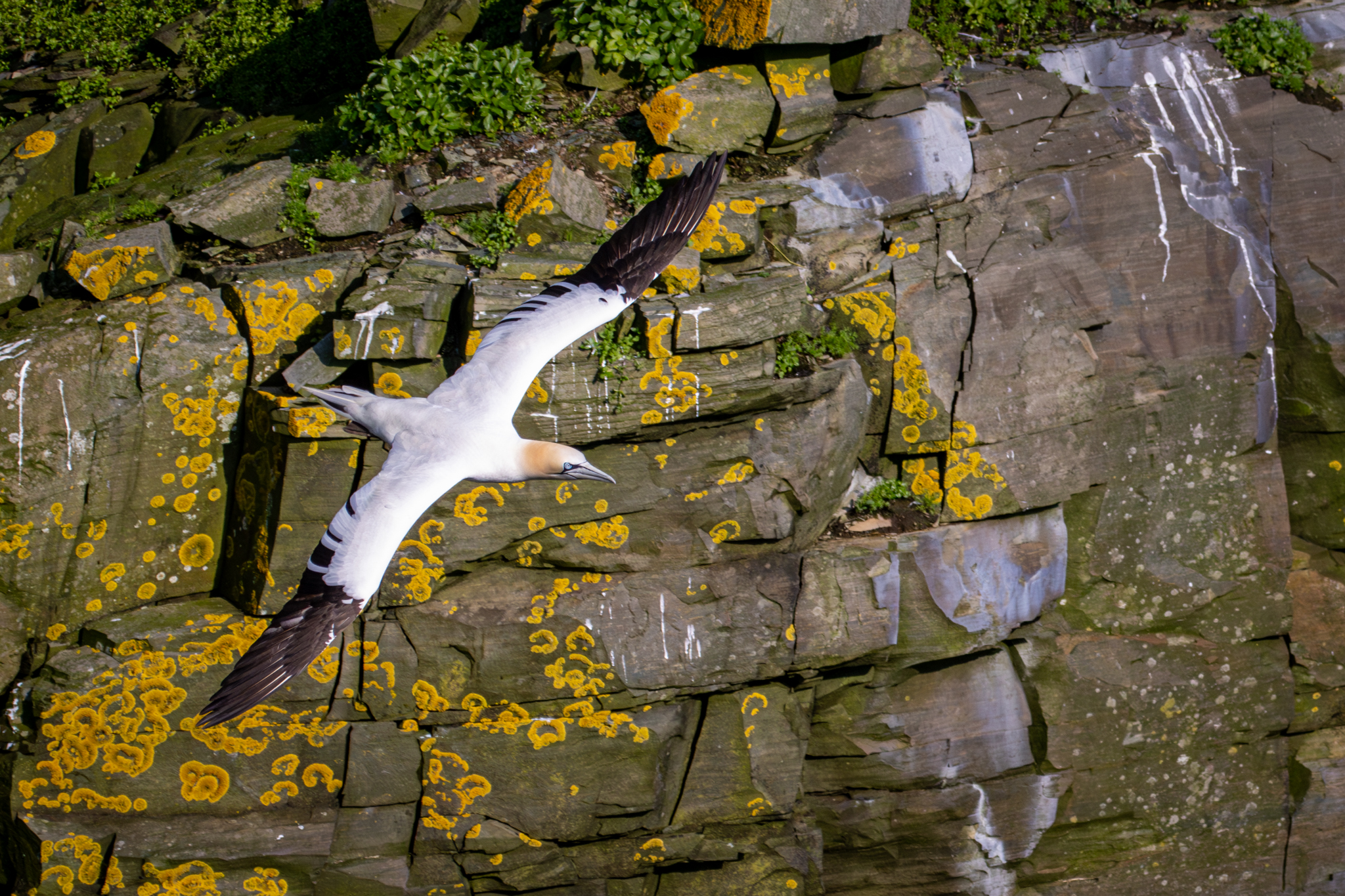
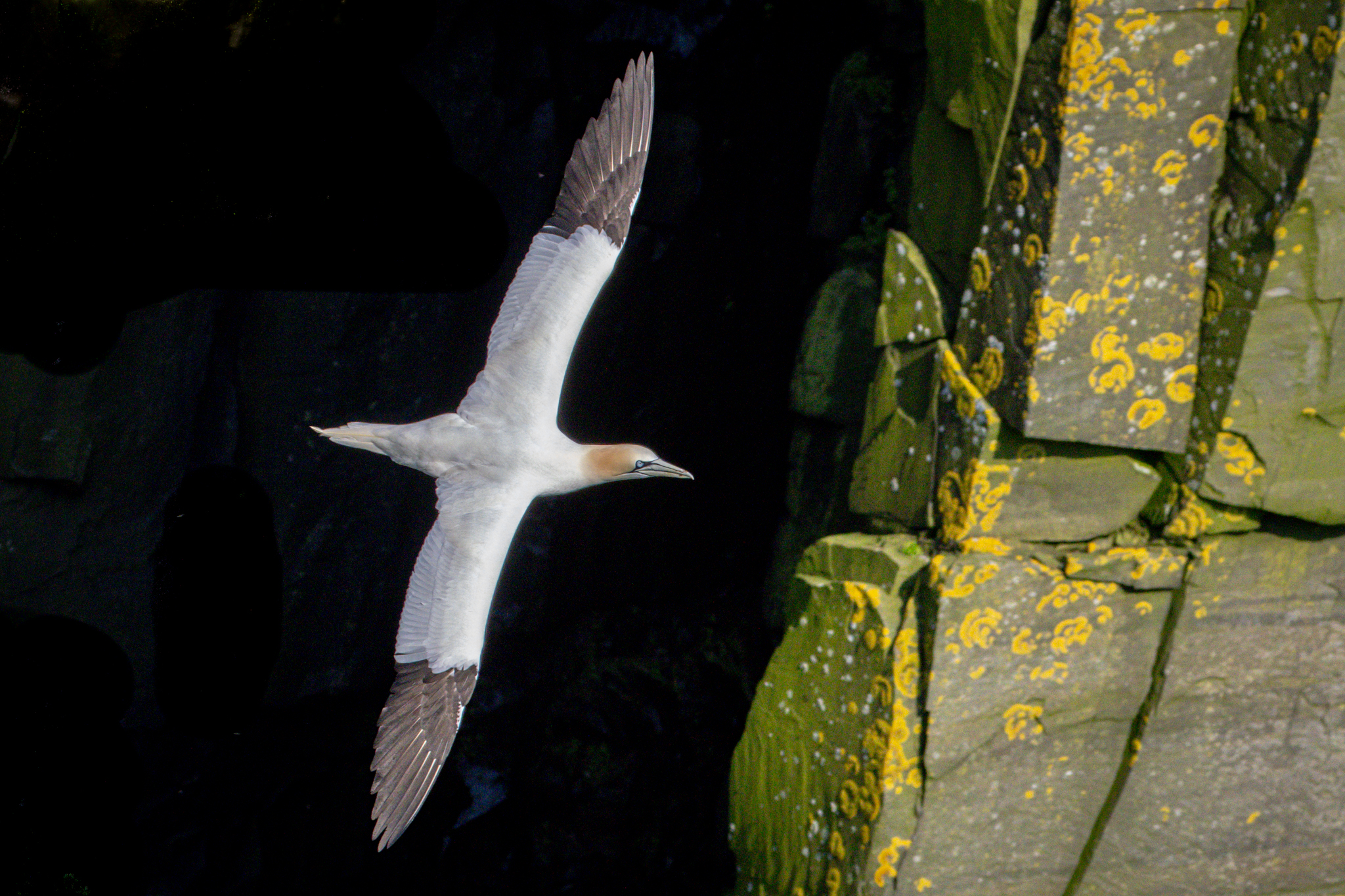
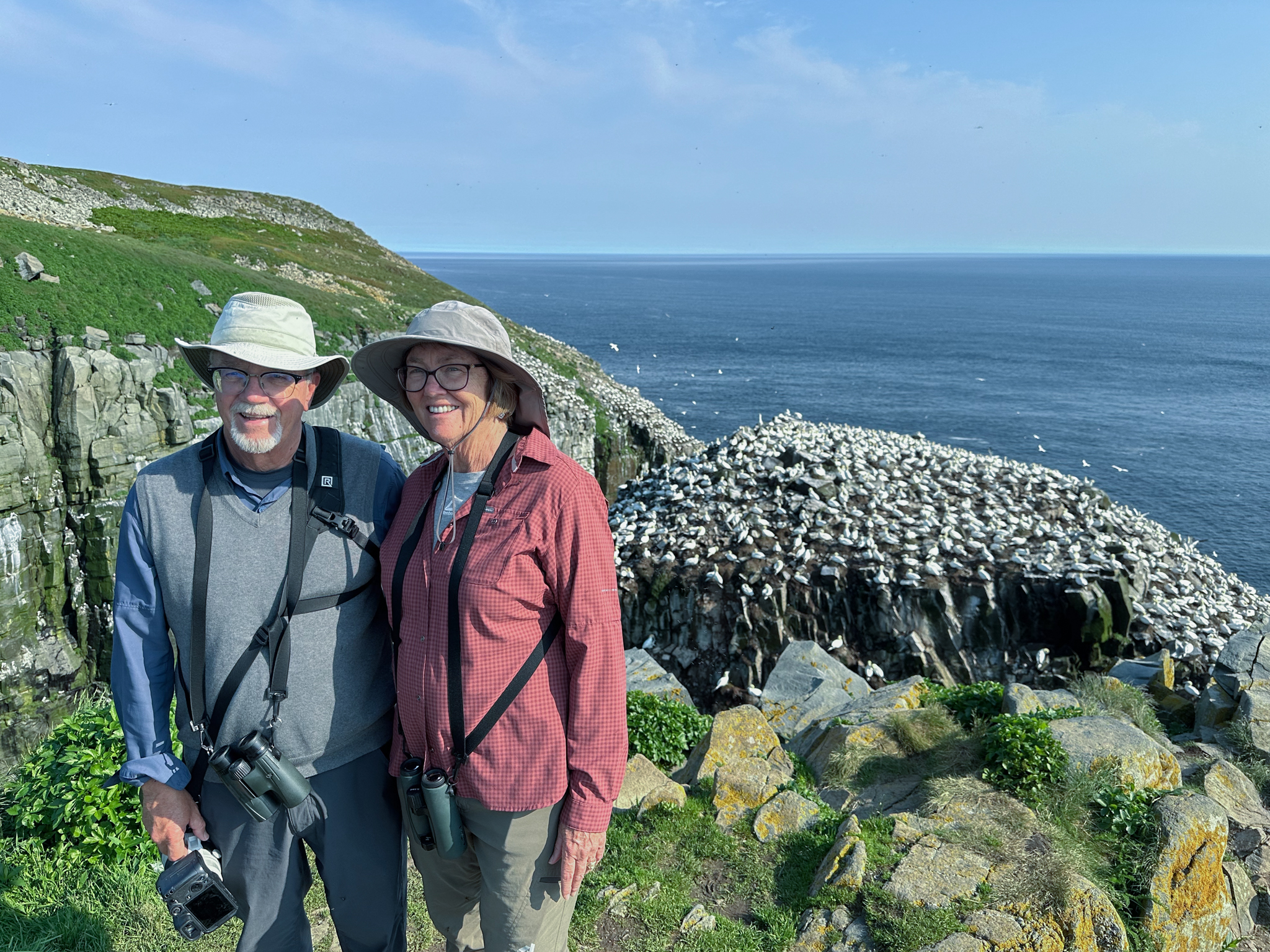
These are beautiful pictures! What an experience! The one picture of the baby looks incredibly dinosaur like.